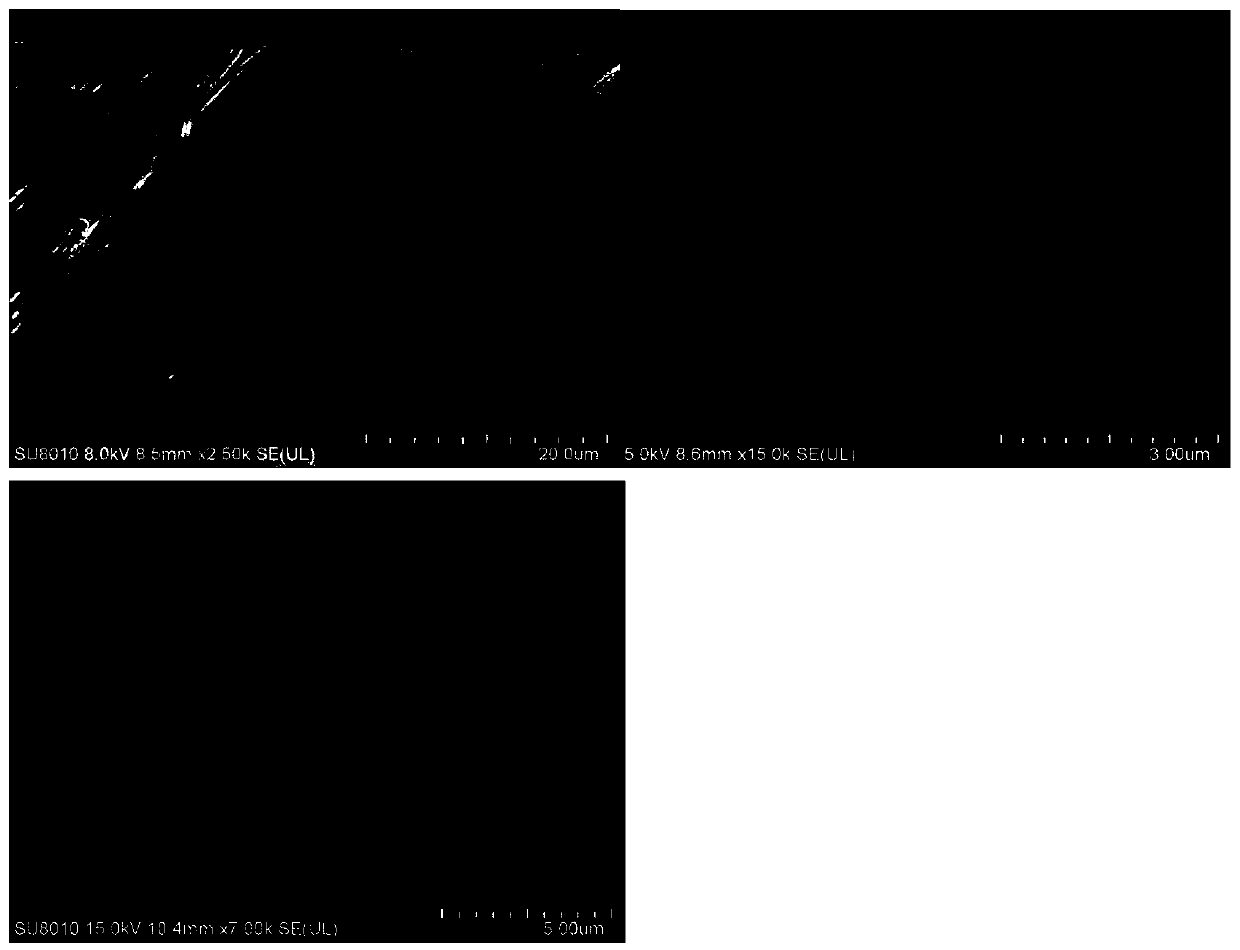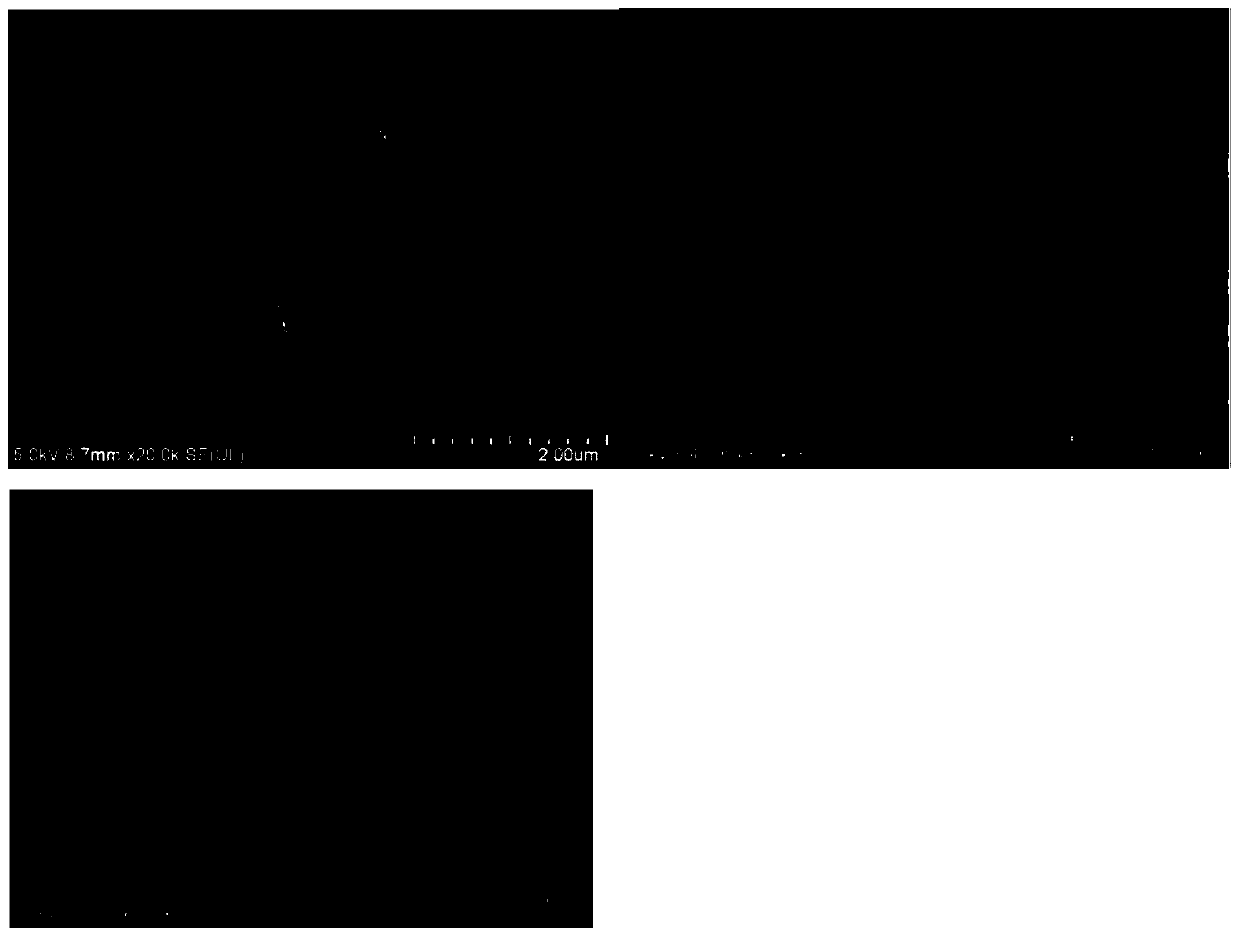CNF-TMO lithium ion battery anode material and preparation method thereof and application of CNF-TMO lithium ion battery anode material
A technology for lithium ion batteries and negative electrode materials, which is applied in battery electrodes, nanotechnology for materials and surface science, negative electrodes, etc. The problem of slow reaction kinetics, etc., can achieve the effects of increasing the length, easy control of reaction temperature and time, and improving material stability and conductivity.
- Summary
- Abstract
- Description
- Claims
- Application Information
AI Technical Summary
Problems solved by technology
Method used
Image
Examples
Embodiment 1
[0032] (1) 1g cobalt acetate (Co(Ac) 2 4H 2 O) Dissolve in 18g dimethylacetamide (DMAc), add 2g polyvinylpyrrolidone (PVP) powder after dissolving completely, stir 24h, obtain the homogeneous mixing spinning solution that polyvinylpyrrolidone solid content is 9%.
[0033] (2) Put the mixed spinning solution in a 10ml syringe, use a 20G stainless steel needle, set the spinning parameters: advance speed 0.8ml / h, voltage 20kV, spinning distance 18cm, use a drum to receive, and spin; After completion, remove it and dry it in an oven at 60°C to obtain PVP-Co(Ac) 2 Non-woven fabrics are metal salt and polymer blended fibers.
[0034] (3) dissolving terephthalic acid in methanol to form a solution with a concentration of 0.15mol / L, the PVP-Co(Ac) obtained in step (2) 2 The non-woven fabric is soaked in it for 12 hours. Due to the coordination of cobalt ions and terephthalic acid, a layer of MOF can be formed on the surface of the fiber. After taking it out, dry it in an oven at 60...
Embodiment 2
[0040] (1) 1g nickel acetate (Ni(Ac) 2 4H 2 O) and 2g cobalt nitrate (Co(NO 3 ) 2 ·6H 2 O) Dissolve in 18g dimethylacetamide (DMAc), add 3.7g polyvinylpyrrolidone (PVP) powder after dissolving completely, stir 24h, obtain the homogeneous mixing spinning solution that polyvinylpyrrolidone solid content is 15%.
[0041] (2) Put the mixed spinning solution in a 10ml syringe, use a 22G stainless steel needle, set the spinning parameters: advance speed 0.6ml / h, voltage 19kV, spinning distance 20cm, use a drum to receive, and spin; After completion, remove it and dry it in an oven at 60°C to obtain PVP-Ni(Ac) 2 -Co(NO 3 ) 2 Non-woven fabrics are metal salt and polymer blended fibers.
[0042] (3) dissolving terephthalic acid in methanol to form a solution with a concentration of 0.05mol / L, the PVP-Ni(Ac) obtained in step (2) 2 -Co(NO 3 ) 2 The non-woven fabric is soaked in it for 12 hours. Due to the coordination of nickel, cobalt ions and terephthalic acid, a layer of MOF...
Embodiment 3
[0048] (1) 4g zinc acetate (Zn(Ac) 2 4H 2 O) be dissolved in 16g dimethylacetamide (DMAc), after dissolving completely, add 3g polyacrylonitrile (PAN) powder, stir 24h, obtain polyacrylonitrile solid content and be the homogeneous mixing spinning solution of 13%.
[0049] (2) Put the mixed spinning solution in a 10ml syringe, use a 18G stainless steel needle, set the spinning parameters: advance speed 1.2ml / h, voltage 14kV, spinning distance 22cm, use a drum to receive, and spin; After completion, remove it and dry it in an oven at 60°C to obtain PAN-Zn(Ac) 2 Non-woven fabrics are metal salt and polymer blended fibers.
[0050] (3) Trimellitic acid is dissolved in methanol to form a solution with a concentration of 0.1mol / L, and the PAN-Zn(Ac) obtained in step (2) 2 The non-woven fabric was soaked in it for 12 hours. Due to the coordination of zinc ions and trimesic acid, a layer of MOF could be formed on the surface of the fiber. After taking it out, it was dried in an ove...
PUM
 Login to View More
Login to View More Abstract
Description
Claims
Application Information
 Login to View More
Login to View More - R&D
- Intellectual Property
- Life Sciences
- Materials
- Tech Scout
- Unparalleled Data Quality
- Higher Quality Content
- 60% Fewer Hallucinations
Browse by: Latest US Patents, China's latest patents, Technical Efficacy Thesaurus, Application Domain, Technology Topic, Popular Technical Reports.
© 2025 PatSnap. All rights reserved.Legal|Privacy policy|Modern Slavery Act Transparency Statement|Sitemap|About US| Contact US: help@patsnap.com



